Landscape Guidelines
Thin soils, hot weather and periodic droughts punctuated by torrential downpours make gardening in Central and South Texas a challenge. Incorporate LCRA’s WaterSmart landscape guidelines to plan and create a well-designed, water-efficient landscape.
Design for success
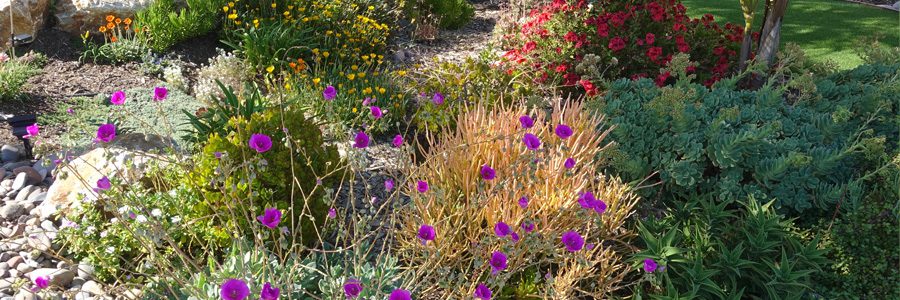
Plant turf on no more than 50%, or up to 5,000 square feet, of the landscape. Plant drought-tolerant or native turf separate from areas planted with shrubs, trees or perennials.
Prepare soil
- Use at least 6 inches of topsoil blended with organic material in planted areas.
- Use native soil from the site, or a fertile, easily crumbled soil/compost blend.
- Incorporate topsoil into 2 to 3 inches of the existing surface to enable water to drain adequately.
- Blend existing soil with compost before sodding or seeding with turf grass.
Landscape guides
Choose plants wisely
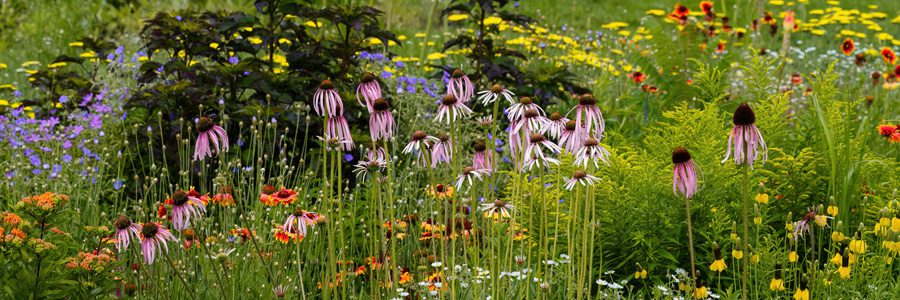
Use native and drought-tolerant plants and turf that require little watering. Avoid invasive and annual plants.
Choose native and drought-tolerant plants
Get help with choosing plants and designing your landscape.
- Turf Conversion Guide. LCRA offers a rebate of up to $2,000 for converting a minimum of 200 square feet of healthy turf grass to native garden beds or drought-tolerant landscapes.
- Texas A&M AgriLife Extension and City of Austin Native and Adapted Landscape Plants
Prep, place and space plants
Proper plant placement and spacing is critical to plant health and long-term landscape quality.
- Consider the mature height and width of plants before planting them.
- Dig a hole for a plant or tree two to three times wider than the plant’s root ball or plant’s container.
Add mulch
- Finish areas planted with trees, perennials and shrubs with a 2- to 4-inch-deep layer of high quality 50/50 blend of organic mulch and compost.
- Use wood chip mulch free of man-made debris, shredded into coarse pieces from 1 to 3 inches.
- Use rock mulch ONLY in small areas with succulents or areas without irrigation requirements such as pathways. Rock mulch can increase heat effect and require more water on planted beds.
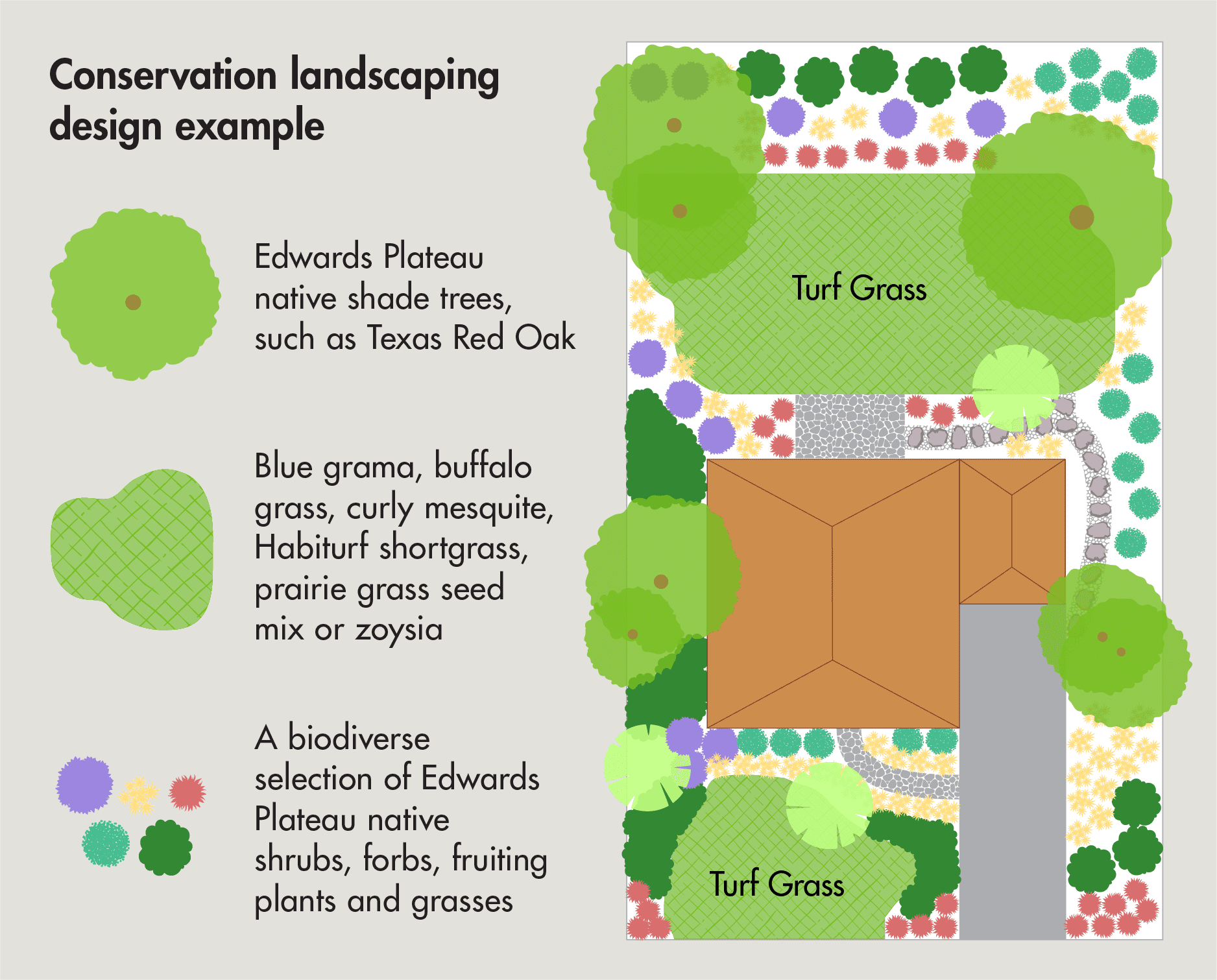
More landscaping design examples
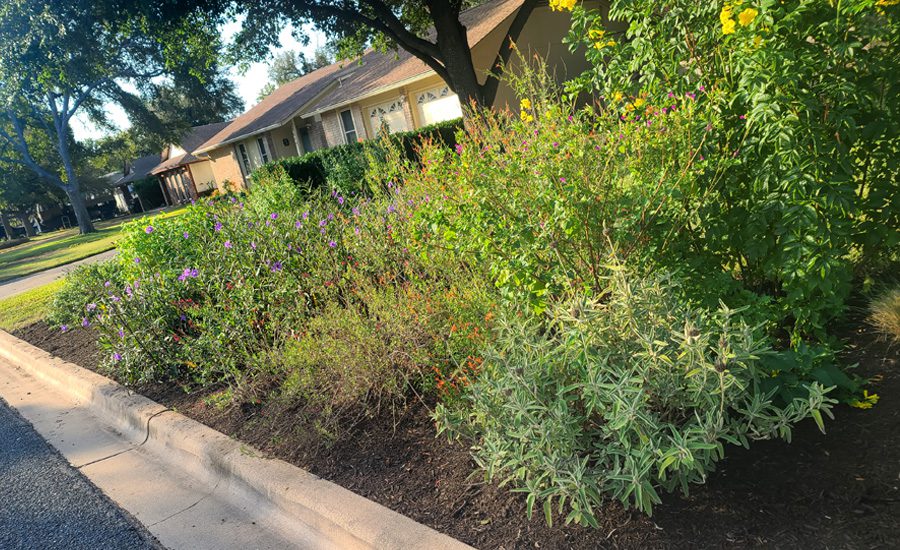
Cypress Mill neighborhood in Cedar Park (Courtesy of Marsha K.)
Irrigate efficiently
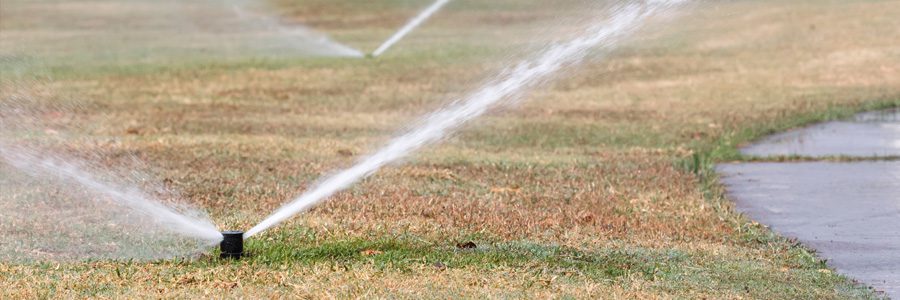
Automated irrigation systems aren’t necessary for a thriving landscape. If you choose to install an automated system, a licensed irrigator must install it according to state regulations.
Irrigation system guidelines
- Limit automatic irrigation for each home or business to two times the foundation footprint – or a 10,000-square-foot maximum.
- Use point source drip emitters for trees and shrubs, and drip tubes at a depth of 2 inches below surface for ground cover plants.
- Do not irrigate turf with point source drip irrigation. Instead use multistream rotators when possible.
- Use irrigation zones and plant drought tolerant and/or native varieties with similar watering needs together.
- Prevent overspray onto hardscapes such as driveways, sidewalks and streets.
- Include in-line check valves and sprinkler heads with check valves in irrigation zones at the bottom of sloped terrain along curbs, sidewalks and streets.
- Do not use irrigation on medians, parking islands and other areas less than 10 feet wide. Use native or drought-tolerant plants or consider using artificial turf in these smaller areas.
Recommended irrigation system features
- A rain sensor, soil moisture sensor or weather sensor to stop the irrigation cycle during and after a rainfall event.
- In-line pressure regulators, flow control valves or sprinkler devices equipped with pressure regulation stems or nozzles to maintain efficient water flow.
- A WaterSense-labeled smart controller featuring multiple start times, rain sensor capability, a water budget feature and a non-volatile memory in case of a power outage.
Irrigation system guides
Learn more from Texas A&M AgriLife Extension about designing and setting your irrigation system to prevent runoff and water waste.
Landscape maintenance

- Replenish mulch a minimum of every two years in the fall and spring.
- Aerate turf grass within the first year of construction and twice a year afterward.
- Topdress turf grass with quality compost twice a year.
- Mow turf no shorter than 3-4 inches.
- Set your automatic irrigation system back to a normal schedule after turf is established.
- Watering recommendations can be found at www.WaterMyYard.org.
- Please refer to your local water provider for watering requirements.


Social Media